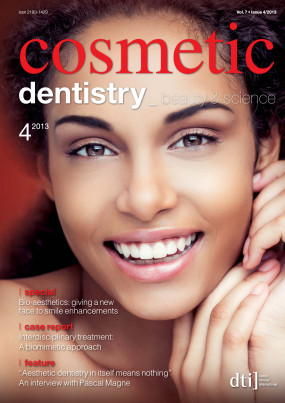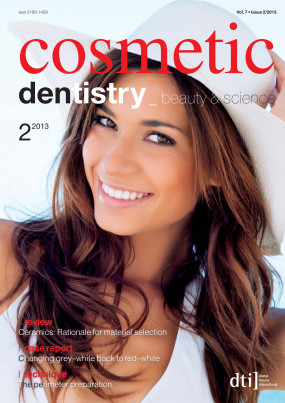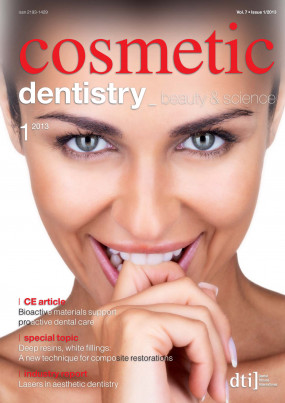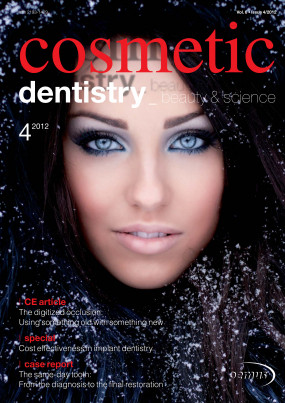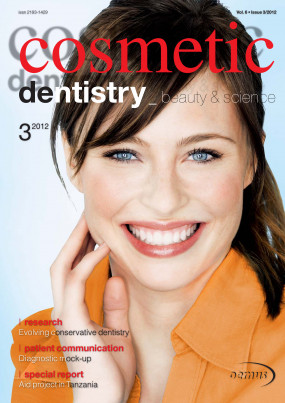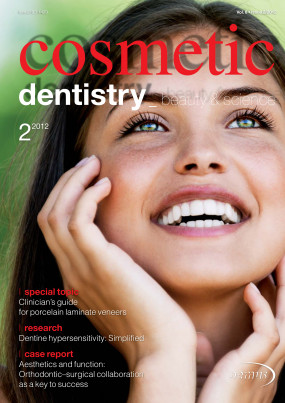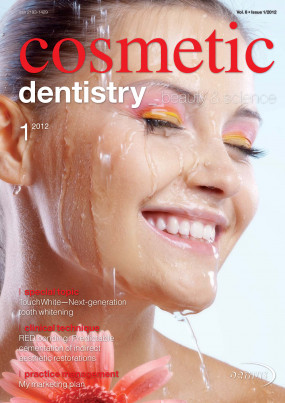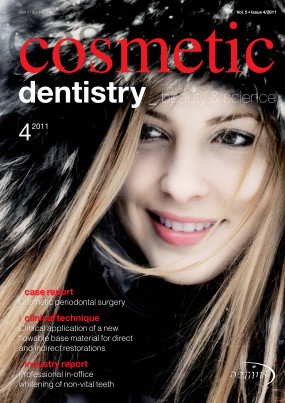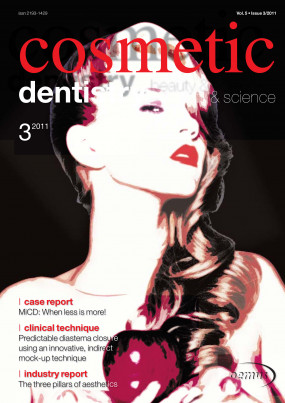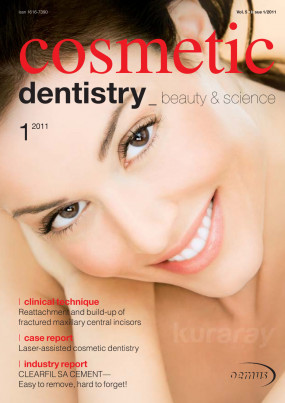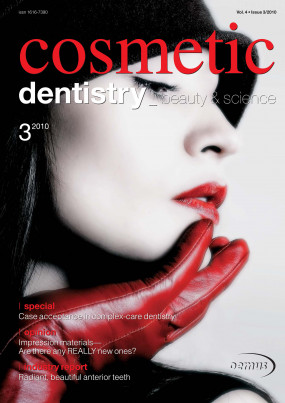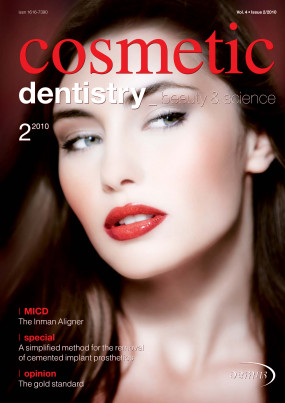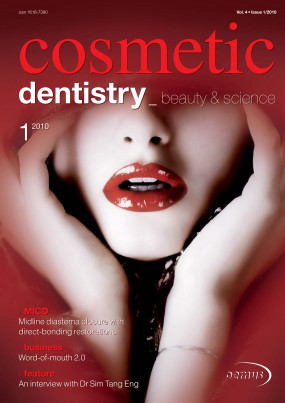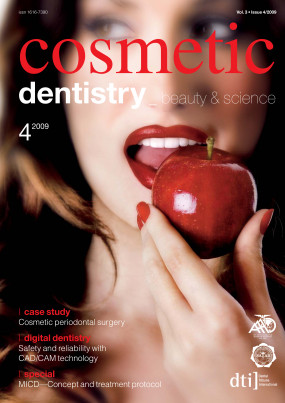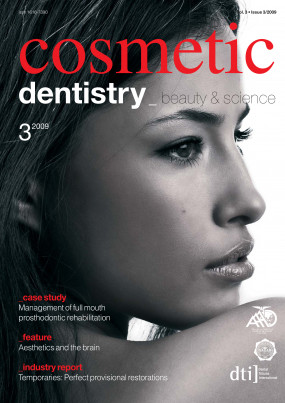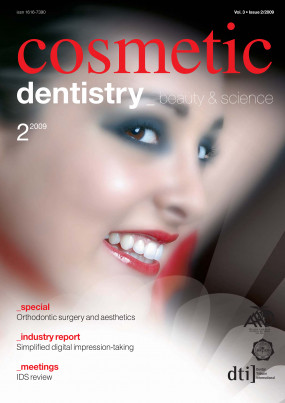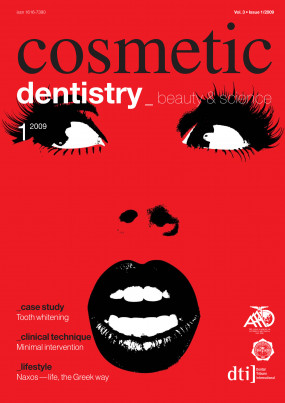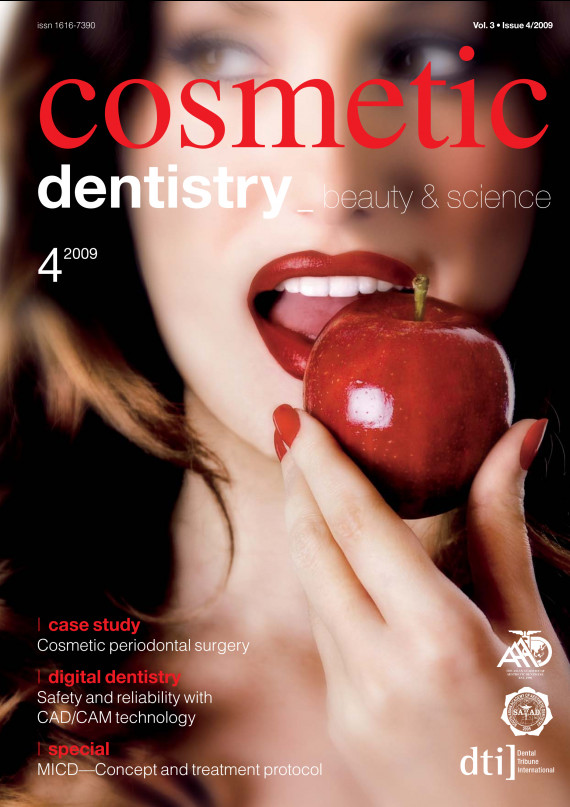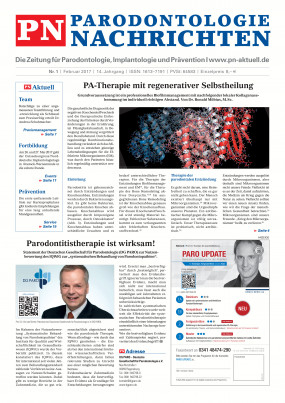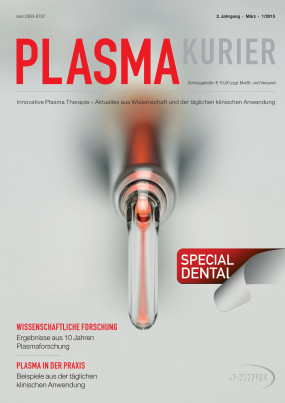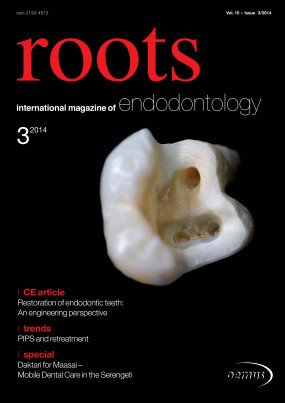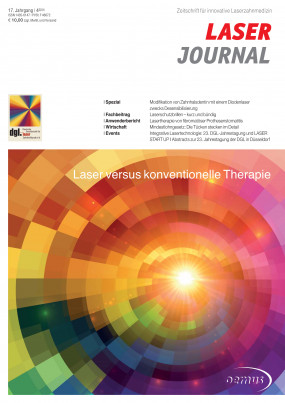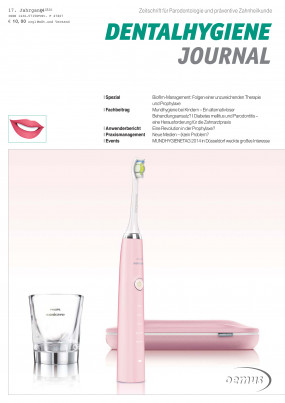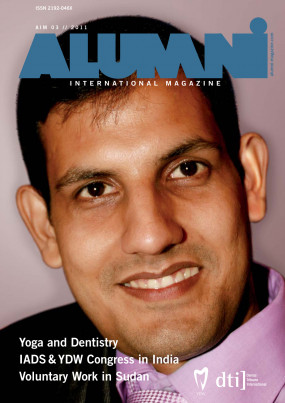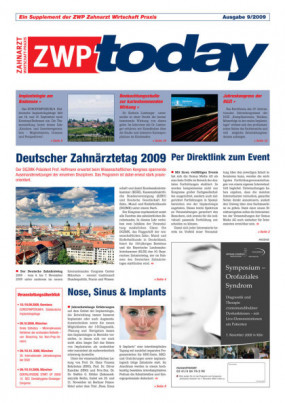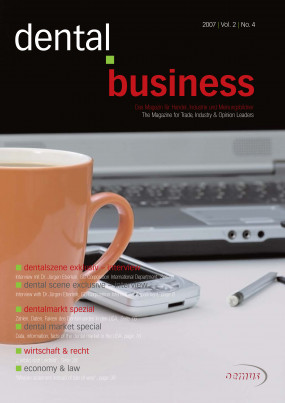Inhaltsverzeichnis
3
6
Cosmetic periodontal surgery: Pre-prosthetic soft-tissue ridge augmentation (Part I)
Dr David L. Hoexter
Dentists understand that patients demand outstanding aesthetic, as well as physiological, results in all phases of dentistry today. This places an onus on dentists, who must therefore be able to apply the latest technologies and techniques to achieve each patient s unique aesthetic desires successfully. A successful aesthetic outcome requires knowing how to create the right illusion, which is subjective for each individual. Yet, it can be measured in objective and subjective standards. How then can practitioners evaluate and achieve these goals?
10
Complete maxillary implant prosthodontic rehabilitation utilising a CAD/CAM fixed prosthesis
Dr Neo Tee-Khin, Dr Ansgar C. Cheng, Dr Helena Lee & Ben Lim, Singapore
Endosseous implant treatment has been widely reported as a highly predictable treatment modality with a low percentage of clinical complications. Prudent clinical judgement and careful consideration of the risks and benefits of various treatment options are essential for the treatment planning and long-term success of prosthodontic treatment.1
14
Presently, numerous options for non-preparation veneers are available on the market. These have been proven to be effective and serve as an excellent marketing tool in the dental practice specialising in aesthetics. However, these types of veneers are not applicable for patients with individual colour or shape requests or those suffering from a habitual dysfunction. For such patients, a standardised veneer preparation is generally excluded.
18
This 61-year-old executive has lived with the effects of tetracycline-stained teeth since she was a little girl (Fig. 1). All her life she wanted to have a great smile, but she never knew what her dental options were. The general dentist she had seen for many years told her there was nothing he could do to help her,
so he referred her to our office.
22
Maintenance of periodontally compromised teeth with direct splintingÑ current materials and options
Dr Ajay Kakar, India
Periodontal disease is initiated in the main as gingivitis, which in a smaller subset of individuals progresses to the more advanced form referred to as periodontitis. Gingivitis is re-
stricted to the marginal gingival area and does not lead to destruction of osseous tissue. Gingivitis is the progression to periodontitis, which encompasses extensive loss of bone surrounding the tooth. Modern-day therapy can generally ensure the arrest of the progression of periodontal destruction and, in favourable situations, even the regeneration of all the components
of the periodontal apparatus, albeit to a much lesser extent than the original. Of the periodontal structures, the loss of soft tissue makes the process of complete regeneration much more difficult...
28
Increased media coverage and the availability of free web-based information has lead to heightened public awareness and thus to a dramatic increase in patients aesthetic expectations, desires and demands. Today, a glowing, healthy and vibrant smile is no longer the exclusive domain of the rich and famous and most general practitioners are forced to incorporate various aesthetic treatment modalities in their daily practices to meet this growing demand...
34
CAD/CAM expands the scope of restorative dentistry Author_ Manfred Kern, Germany
Manfred Kern, Wiesbaden, Germany
Today, it is impossible to imagine dentistry without digital technology and CAD/CAM procedures. Intra-oral and extra-oral measuring, the scanning of antagonists and bite registrations, 3-D design on a computer, the availability of countless tooth shapes in a dental database, the creation of anatomically shaped occlusal surfaces, functional articulation on a virtual model, the subtractive machining of high-performance ceramicsÑall this would be impossible without computers.
40
Today, dental technicians and general practitioners are challenged by an ever-increasing number of CAD/CAM systems in the dental market. In order to determine which system is best suited, various aspects need to be considered. While CAD/CAM technology was initially associated with zirconia-based restorations, advanced systems offer an extensive range of materials and solutions for both natural teeth and implants. The benefits are not limited to a more cost-efficient fabrication of dental restorations in the laboratory; practitioners and patients benefit from the technological advancements equally. This article discusses the various aspects that need to be considered in the decision-making process.
44
Smile upgrade - Highly aesthetic composite restorations in the anterior region
Dr Ronald D. Jackson, USA
The emphasis on appearance is pervasive
in today s media-driven culture. It is particularly keen in adolescents as a result of constant exposure to images of beautiful young celebrities (real or media-created) in magazines, television, pop music and everywhere on the Web. Because the smile is such a significant factor in facial appearance, the impact of this culture shift on dentistry has been enormous. In particular, young teenagers are seeking out aesthetically oriented dentists and requesting correction of mild to moderate imperfections in teeth that previous generations tolerated because dentistry lacked a simple, predictable aesthetic solution...
